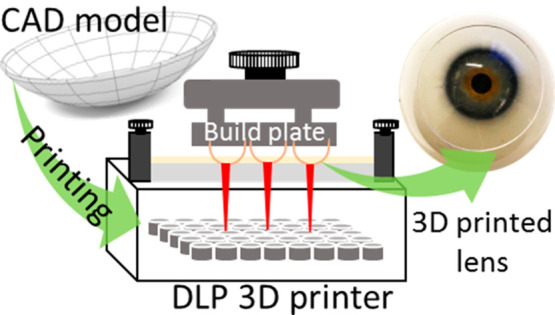- Record: found
- Abstract: found
- Article: found
3D Printed Contact Lenses

Read this article at
Abstract

Although the manufacturing processes of contact lenses are well established, the use of additive manufacturing for their fabrication opens many new possibilities to explore. The current study demonstrates the fabrication of personalized smart contract lenses utilizing additive manufacturing. The study includes 3-dimensional (3D) modeling of contact lenses with the assistance of a computer aided designing tool based on standard commercial contact lens dimension, followed by the selection of the suitable materials and 3D printing of contact lenses. The 3D printing parameters were optimized to achieve the desired lens geometries, and a post processing treatment was performed to achieve a smooth surface finish. The study also presents functionalized contact lenses with built-in sensing abilities by utilizing microchannels at the contact lens edges. Tinted contact lenses were printed and nanopatterns were textured onto the contact lens surfaces through holographic laser ablation. 3D printed contact lenses have advantages over conventional contact lenses, offering customized ophthalmic devices and the capability to integrate with optical sensors for diagnostics.
Related collections
Most cited references49
- Record: found
- Abstract: not found
- Article: not found
Additive manufacturing (3D printing): A review of materials, methods, applications and challenges
- Record: found
- Abstract: found
- Article: not found
Polymers for 3D Printing and Customized Additive Manufacturing
- Record: found
- Abstract: found
- Article: not found